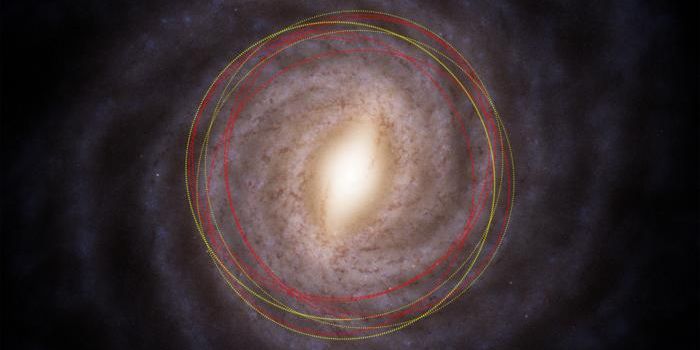Scientists Are Developing a Better Understanding of Ultima Thule Post Fly-By
Before NASA’s precedent-setting New Horizons spacecraft flew past Kuiper Belt Object (KBO) Ultima Thule on New Year’s Day, no one was entirely sure what to expect; after all, humankind had never photographed a KBO up close before. That aside, Hew Horizons delivered astonishing results and provided planetary scientists with a bevy of detailed images that will inspire a greater understanding of the host of objects that exist in the Kuiper Belt today.
Image Credit: NASA/Johns Hopkins University Applied Physics Laboratory/Southwest Research Institute/National Optical Astronomy Observatory
It’s been almost three months since NASA’s New Horizons spacecraft conducted its historical fly-by mission with Ultima Thule (2014 MU69), and while the spacecraft has already beamed back many of its clearest images of the distant world, planetary scientists are only beginning to understand the object’s history and its role in the formation of the solar system.
Mission scientists had a lot to say about Ultima Thule at this week’s 50th Lunar and Planetary Science Conference in Texas, and as it would seem, there’s almost no question that Ultima Thule is indeed a primordial contact binary. Moreover, the object’s peculiar ‘flattened’ shape, which was revealed in images just last month, was of particular interest to mission scientists.
“We’ve never seen anything like this anywhere in the solar system,” commented Alan Stern, the principal investigator of the New Horizons mission. “It is sending the planetary science community back to the drawing board to understand how planetesimals – the building blocks of the planets – form.”
Related: NASA's New Horizons probe grabbed incredible pictures of Pluto during its historical fly-by
Given that New Horizons is a primordial object, it can be assumed that the distant world came into existence after hunks of primordial matter accreted and grew over time. The two lobes that comprise Ultima Thule weren’t always conjoined; instead, they orbited one another and slowly coalesced in what can only be described as a “gentle merger,” forming the seemingly-insignificant KBO that we can observe today.
“This fits with general ideas of the beginning of our solar system,” added mission co-investigator William McKinnon. “Much of the orbital momentum of the Ultima Thule binary must have been drained away for them to come together like this. But we don’t know yet what processes were most important in making that happen.”
Related: Learn more about the many records New Horizons shattered during its most recent mission
The solar system is thought to have formed more than 4.5 billion years ago, and Ultima Thule must have combined into the dual-lobed object that it is today sometime after that. While this much seems self-evident, understanding how it all went down is a more challenging feat, but clues left behind on the KBO’s surface are helping scientists devise theories about it all.
For one, Ultima Thule’s ‘neck’ (or the part that conjoins the two lobes) appears bent in the photographs. This characteristic strongly supports that each of the lobes orbited one another before conjoining and that the opposing forces left their mark shortly after the merger.
Scientists have also confirmed that Ultima Thule is indeed very red in color much like other KBOs, but also note that there are subtle discolorations in the object’s surface that have yet to be explained. Methanol, water ice, and other organic molecules have also been all but confirmed to exist on the world’s enigmatic surface.
The New Horizons spacecraft currently resides more than 4.1 billion miles away from Earth, and as you might come to expect, this adds quite a bit of latency in the time it takes for information to reach Earth. We still don’t have all the data from this particular fly-by mission, and NASA says we won’t have all of it until sometime next Summer. With that in mind, we can only imagine what else scientists might learn from the data as it slowly trickles in, but it should be interesting nevertheless.
Source: NASA









